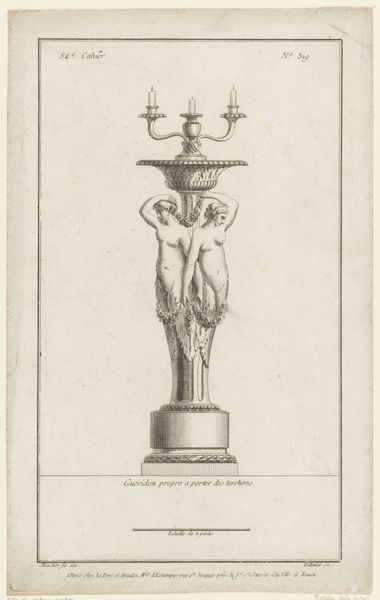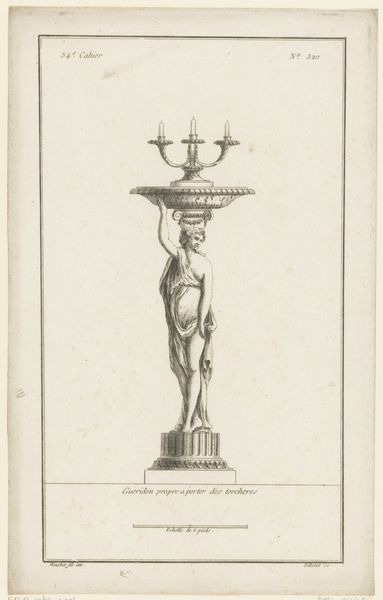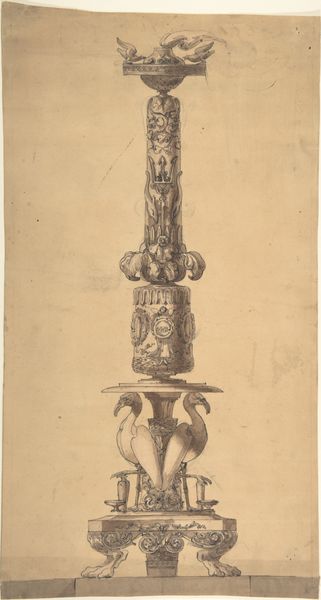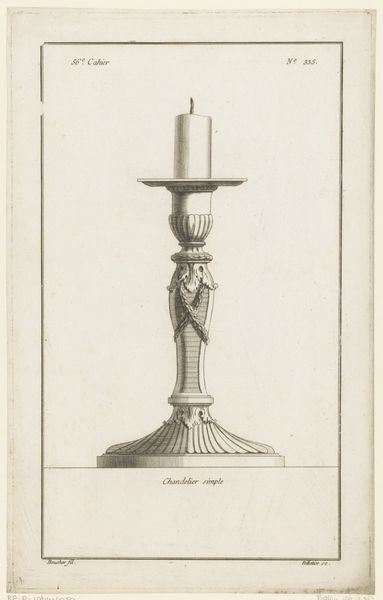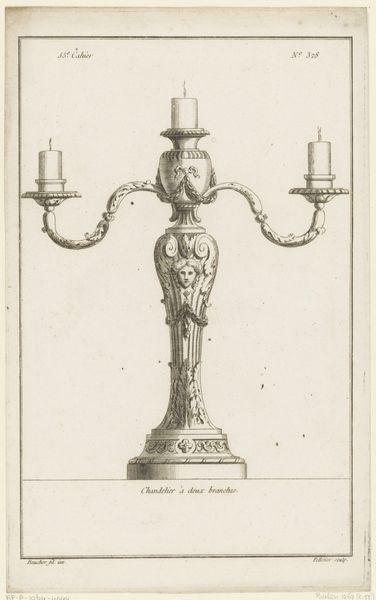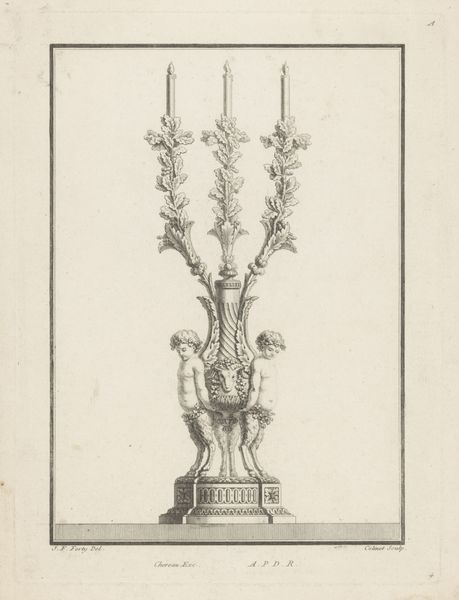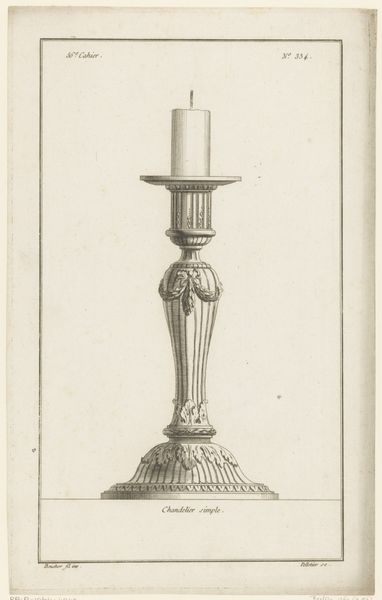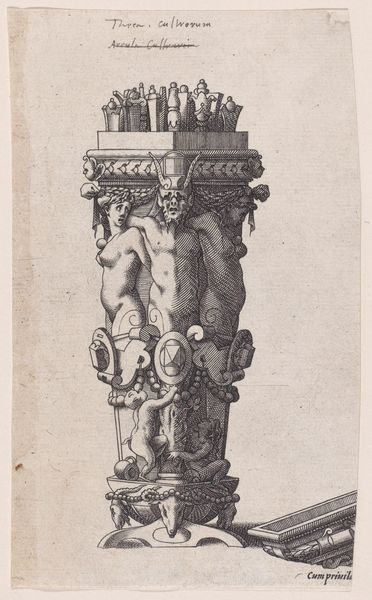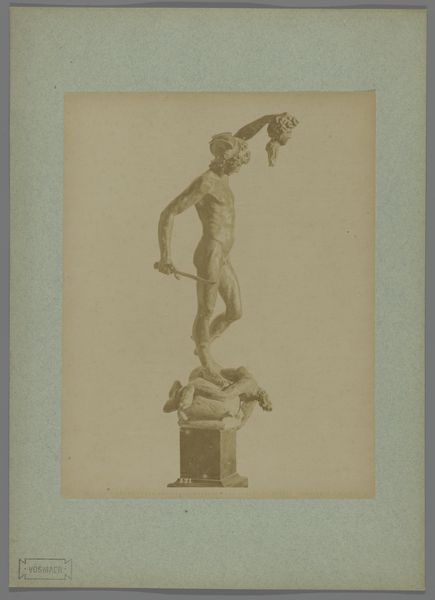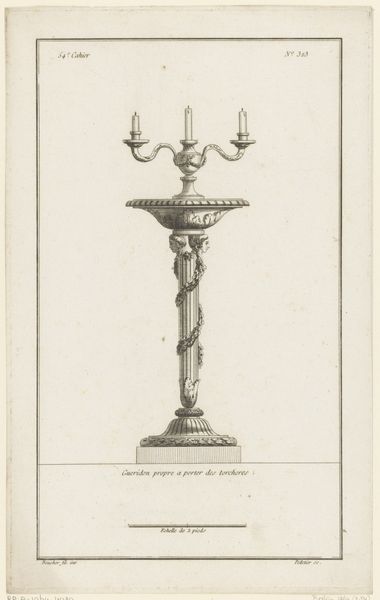
Dimensions: height 368 mm, width 243 mm
Copyright: Rijks Museum: Open Domain
Editor: This print by Jean François Forty, "Kandelaar met vrouwelijke halffiguren", which translates to "Candelabra with female half-figures," was made between 1775 and 1790 using engraving. I'm struck by the intricate line work and the way it combines the human form with decorative elements. What can you tell me about its place in history? Curator: This piece exemplifies the decorative arts of the late 18th century, reflecting the era's fascination with classical motifs and the human form, but filtered through the lens of emerging neoclassicism. The print itself, as a medium, broadens access. Consider, what purpose might this detailed engraving have served within that social and cultural context? Editor: Well, the precision suggests it wasn't just art for art's sake. Was it meant as a guide for artisans, a promotional tool for a workshop, or something else entirely? Curator: Exactly! It likely functioned as a design blueprint, circulating ideas and styles among craftsmen. Prints democratized design, enabling the dissemination of fashionable aesthetics beyond the wealthy elite who could commission unique pieces. The inclusion of female figures also reflects a particular gaze. How do you think gender and power might be implicated in such a design? Editor: It's interesting to think about the female form being both idealized and objectified, essentially serving a structural role in a luxury item. This brings up questions about the role of women in society and how their bodies were used in art and design during that period. It challenges the common narrative about representation! Curator: Precisely. This "Kandelaar" illuminates how art, even seemingly simple decorative art, engaged in a complex social discourse, negotiating aesthetic ideals with prevailing power structures. It makes one ponder: whose taste was being catered to? Editor: I never considered how something as simple as a candelabra design could hold so much historical weight. Looking at it now, I realize how much more there is beyond just the aesthetic appeal. Thanks for the insight! Curator: Indeed. Art like this urges us to investigate further, revealing history through object, prompting continual interrogation of beauty, utility, and their place in our societal tapestry.
Comments
No comments
Be the first to comment and join the conversation on the ultimate creative platform.
